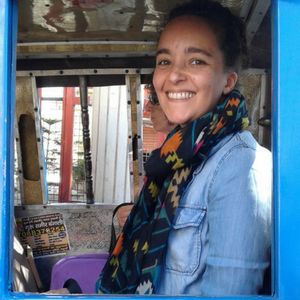In his 1978 essay “The New Story: Comments on The Origination and Transmission of Values,” Thomas Berry essentially coined the term “the New Story.”
In that essay, he spoke of a troubling disregard of the earth by both religion and science. “The earth will not be ignored, nor will it long endure being despised, neglected, or mistreated,” he wrote. “The limitations of redemption rhetoric and the scientific rhetoric can both be seen, and a new more integral language of being and value can emerge.” (Read and/or download the 17-page essay.)
Berry gave contour to what he called the New Story with three themes:
1. Differentiation – recognition and appreciation for the variety of life forms that Earth brings into being
2. Inner awakening – reverence for life and our own sacred qualities
3. Intercommunion – interdependence: even the minutest particle of life is in relationship with every other aspect of life; one could not exist without the other
One of his concluding paragraphs weaves these themes together:
If the dynamics of the universe from the beginning shaped the course of the heavens, lighted the sun, and formed the earth—if this same dynamism brought forth the continents and seas and atmosphere, if it awakened life in the primordial cell and then brought into being the unnumbered variety of beings and finally brought [wo]man into being and guided him [or her] safely through the turbulent centuries—there is reason to believe that this same guiding process is precisely what has awakened in [woman] his [or her] present understanding of himself [or herself] and his [or her] relation to this stupendous process. Sensitized to this guidance we can have confidence in the future that awaits the human venture.
In several ways, the 90-minute documentary An Enquiry into a New Story for Humanity: Change the Story, Change the World reflects Berry’s call for a more integral language of being and value.
The film grew out of the 2014 New Story Summit at Findhorn Foundation, the conscious-living community and spiritual learning center in Scotland. It features an array of interviews with Summit presenters and participants, who hailed from 45 or so countries.
Each person interviewed addressed healing the story of separation and its devastating consequences, from colonial/capitalistic exploits to dehumanization and gender-based violence. The Summit, organized along gift-economy lines, brought together people from diverse professional, activist, and spiritual backgrounds—indigenous wisdom, engaged Buddhism, corporate and policy leadership, education, philosophy.
The film’s ending call-to-action could be encapsulated as points of willingness and responsibility. I’m paraphrasing (but not spoiling—watch the film!) those here:
- Serve what’s needed at this moment in our human history.
- Maintain a reverence for life.
- Recognize the unity within the diversity.
- See problems as opportunities.
- Believe in messages of the heart, along with our creativity.
- Accept grief as part of our healing and impetus to our motivations.
- Be OK with experimentation, “failure,” uncertainty, conflict.
Learn more about the film and/or watch it online:









